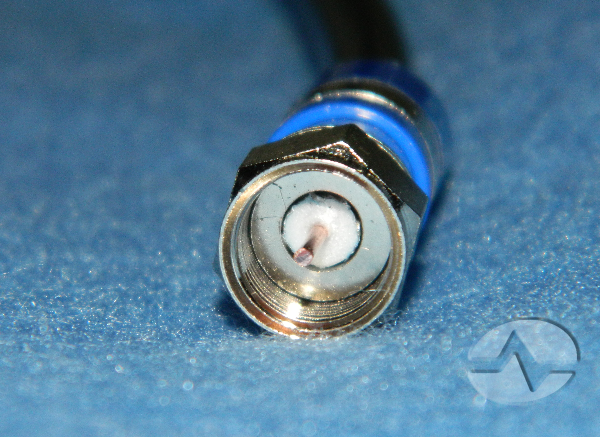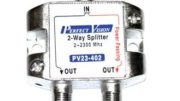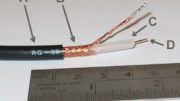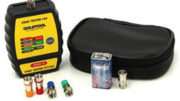You may have heard of quad shielded cable. If you’re the sort of person who wants the best of everything, you might have considered using it. Before you rewire, though, you need to know the facts.
What is quad shielded cable?

This is quad shielded cable. It’s a type of coaxial cable that has an extra set of foil and braid around it. Compare this image to regular (dual-shielded) RG6 cable:
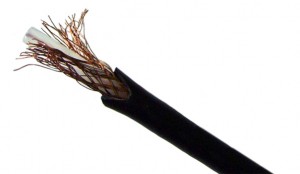
Coaxial cables use the center conductor and the white dielectric to contain the power and electrical field, and the outer areas are used for shielding. More shielding means better protection against outside sources of radiation.
When is quad-shielded cable needed?
Quad-shielded cable is used whenever there is a lot more electromagnetic interference than normal. Commercial installations, factory floors, and commercial kitchens are good examples. Anywhere that there is a big motor, a big machine, or some sort of RF device like a microwave oven or base station radio is a good candidate for quad-shielded cable.
What are the downsides of quad-shielded cable?
I generally don’t recommend people use quad-shield cable unless they know they need it. It’s more expensive and requires special connectors. It’s thicker and harder to work with. Generally it’s a lot more of a pain when you’re doing an install, especially if this is an existing building when you can’t just put the cables anywhere you want.
I know a lot of people who put in quad shield cable into their DIY satellite installations. It works, of course, but most of the time these folks were paying for the bragging rights. They wanted to have the best of everything, not the most economical. There’s certainly nothing wrong with that and we appreciate our long term customers. I just think that for most people it’s a little bit of overkill.
Doesn’t RG6 quad cable let you go longer distances?
This is a myth. In general, quad-shielded cable has the same amount of loss per 100 feet as regular, dual-shielded cable. The loss is generally determined by the size of the center conductor and the dielectric, not by the amount of shielding that’s on the outside. If you find that RG6 quad cable gives you better performance, that’s usually due to a source of RF interference that was affecting the cable before and isn’t now.
And what about RG11 cable?
When talking about cables that are a little bit of overkill, the subject of RG11 cable comes up. RG11 cable is a specialized version of coaxial cable that is made for longer runs. Because it does have a thicker center conductor and more dielectric, you can usually go about 25% further with RG11 cable and have the same amount of loss.
However, RG11 cable has a lot of downsides. It’s so thick that dealing with it is really difficult. It’s hard to maneuver around bends. The connectors for it are really big and could make it hard for you to fit your equipment where you want to put it.
In general I do not recommend the use of RG11 cables shorter than 100 feet. Their superior loss quality also means that there is more “reflection” when the cable meets the connector. This means a small amount of signal is sent back through the cable and can carry up to 35 feet, causing interference.
When you’re ready to rewire…
Solid Signal has over 10,000 different selections of cables and connectors for you to choose from. Plus we have compression tools, testers, and every accessory you’ll need to make your next job a success!

